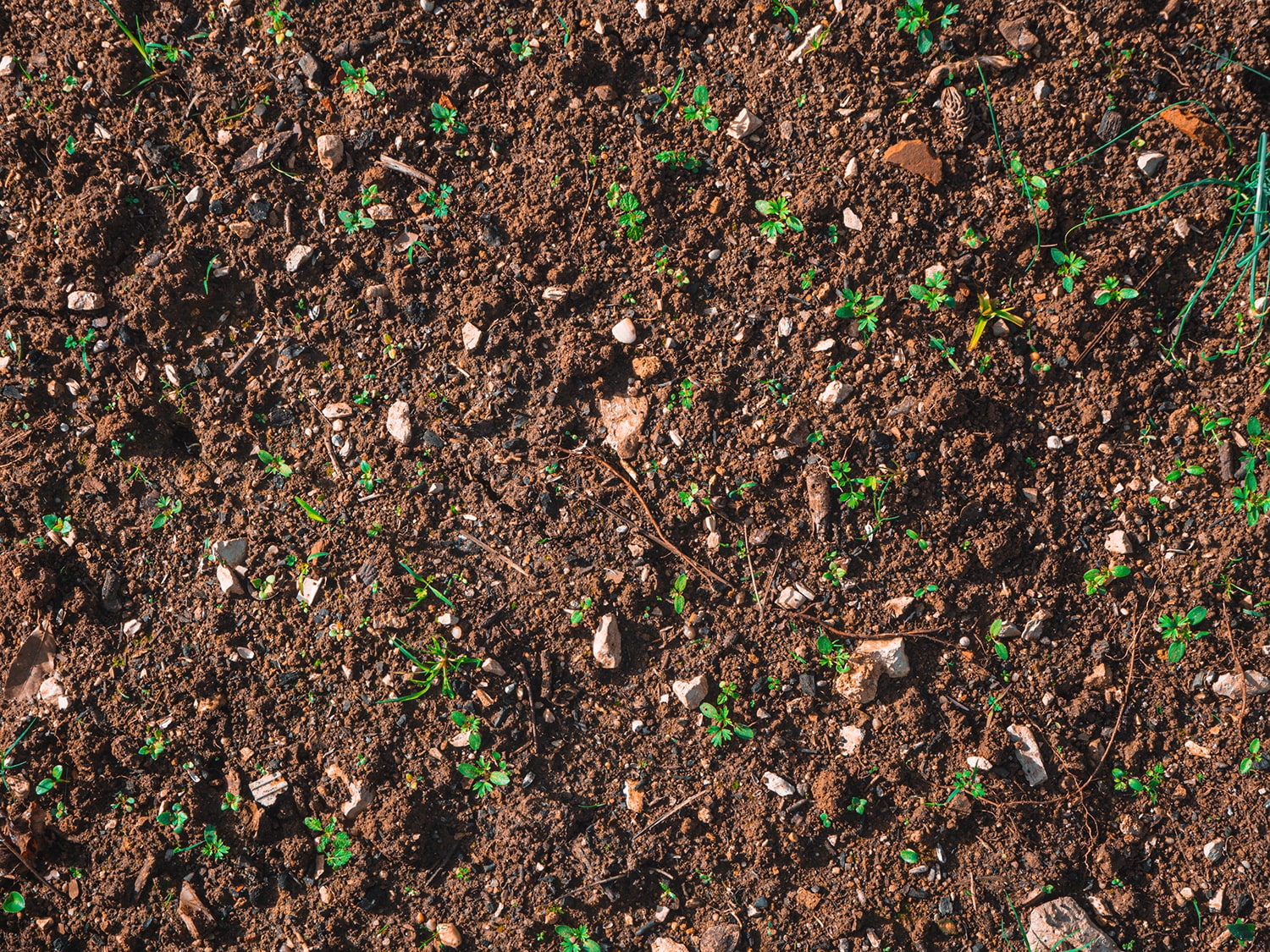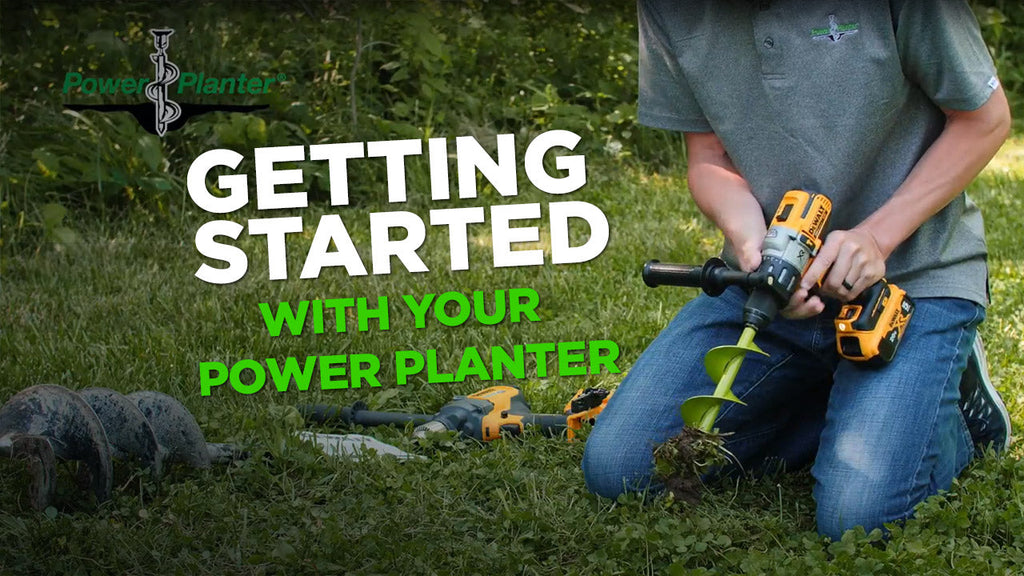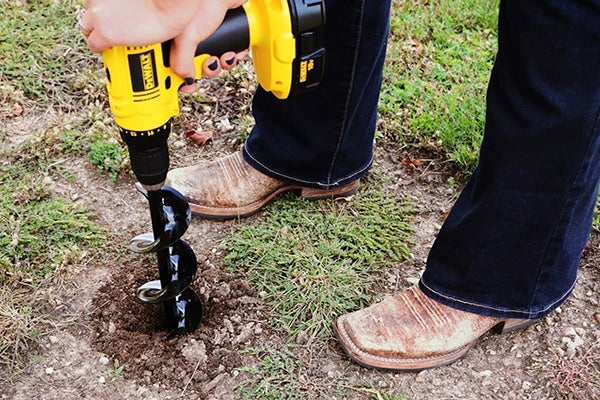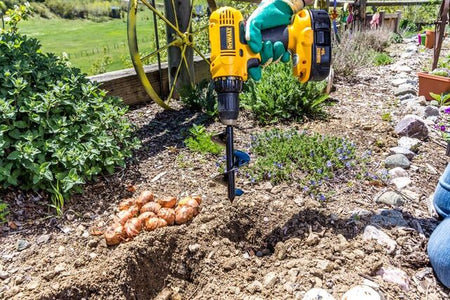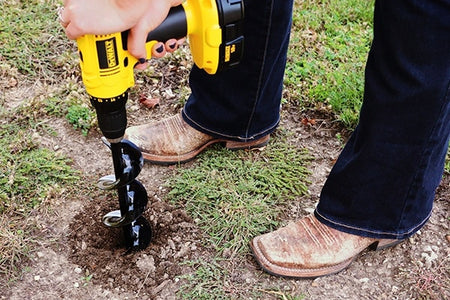Digging holes for plants that are the correct size is crucial. Whether it’s a bulb, tree, or container plant, you want to dig a properly sized hole so the plant can put down its roots and thrive. In this guide, we’ll explore the best way to dig holes of all sizes and how using an auger makes the job faster, easier, and more enjoyable. By following these simple tips, you’ll learn how to dig a hole efficiently in any type of soil.
Use the Right Tools
When most people think about how to dig a hole, they imagine reaching for a spade or a shovel. There’s nothing wrong with this approach if you like blisters and a sore back, but there are better hole-digging tools available, namely garden augers. Here is why using an auger is the easiest way to dig a hole:
-
Ease of use, even for people with limited physical abilities
-
They loosen the soil, making it easier for roots to spread
-
They quickly cut through soil, even in dense clay and hard ground
-
They create consistent, perfectly round holes
-
They reduce strain on your hands, back, and knees
Using a garden auger is simple. Start by attaching the auger to your cordless drill like you would with any other drill bit. To begin digging holes for plants, put the tip of the auger into the ground and pull the drill’s trigger (make sure to follow your specific drill manufacturer’s safety instructions). For tougher soil conditions, we recommend using a drill with a side handle for better control and comfort.
As the auger rotates, it should cut through the soil easily, creating a hole. While the hole might backfill a bit, the soil inside should be loose and easy to remove if needed. Once you’ve dug to the desired depth, remove the auger, place the plant in the hole, and backfill with the loose soil around its edges. With an auger, you no longer need to break up clumps of soil like you would when using a spade.
Dig Properly Sized Holes
The key to healthy plants is a hole that is the right depth and width. Here’s how to dig holes for plants and trees that give roots room to grow.
Bulbs
Most bulbs require a hole that is two to three times their height. The hole should also be wide enough to allow the bulb to fit comfortably, with some extra space around it for loose soil when you backfill. It's important to remember that the exact depth and width of the hole will vary depending on the specific type of bulb you're planting, as well as your soil conditions and climate. Bulb augers make it easy to dig perfectly sized holes.
Small Plants
When digging holes for plants no more than three inches wide, use a bulb or small garden auger to dig a hole between 6-12 inches deep. Insert the root ball into the hole, then cover the base of the plant with excess soil. The plant should not sit deeper in the ground than it does in its pot, so be careful not to cover the base of the plant with extra soil. This protects the plant from rot and fungus.
Large Plants
For a plant that is larger than three inches wide, dig a hole about twice the diameter of the pot and about one and a half to two times deeper than the depth of the plant. Use a heavy-duty auger with a large enough diameter to dig the appropriately sized hole. Once the hole is ready, backfill with some excess soil to give the plant some space to extend its roots. Insert the plant and finish backfilling the hole.
Trees
The best way to dig holes for trees is to use a tree auger with a diameter big enough to dig a hole for the root system to thrive. Trees need holes that are three to four times wider than the container, but no deeper. Set the root ball in the hole and backfill around the tree.
Tips for Digging Holes in Hard Soil
If your yard has tough, compacted dirt or clay, these tips can make digging holes easier:
-
Moisten the area the day before you dig to soften the soil
-
Use a longer auger for deeper reach and leverage
-
Keep the drill steady and apply gentle pressure; let the auger do the work
-
Reverse the drill briefly if the auger gets stuck or the soil packs up
Following these steps ensures you’ll know exactly how to dig a hole in hard soil without straining your arms or damaging your tools.
Whether you’re planting a tiny bulb or a large tree, having the right tools for digging a hole can make the experience more efficient and enjoyable. To get started, pick up a Power Planter auger today and discover the easiest way to dig holes for plants!
If you have any more questions about digging with Power Planter augers, consult our Auger Guide or FAQs page to learn more.


